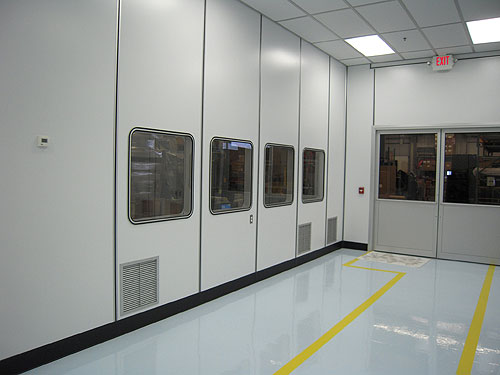Pad Printing in a Cleanroom Environment
by Dan Leiter
Engineered Printing Solutions
Related Stories
Pad printing is a fantastic, fast, quick-drying process allowing for adjustment to ink coverage, density and evaporation each step along the way. It also is vulnerable to the changing conditions in the environment surrounding the pad printing area. It may be beneficial to consider setting up a cleanroom to protect these jobs from exposure to any sudden variables and contaminants that could impact the quality of the finished product. Let's evaluate the pros and cons of investing in a cleanroom.
PROS
- Controlling temperature and relative humidity (RH) allows for consistent ambient climate conditions. It is very helpful in a pad printing environment to guarantee the same quality over multiple runs.
- Eliminating items with a propensity to throw off dust particles from the closed cleanroom keeps the operation free of dust and other airborne contaminants. Get rid of those plywood pad bases – typically standard issue for pad printing – and replace them with something cleaner, like aluminum.
- Replacing flame pretreatment eliminates another source of soot contamination, as well as the risks of working with an open flame.
- Producing a consistent, clean product improves a company's reputation in the marketplace, increases daily production and attracts new customers.
- Providing a stable climatic environment opens the opportunity to implement an ink maintenance program to systematize the process, a further guarantee for consistency across runs and between operators.
- Commissioning a pad printing machine for use in a cleanroom allows for special procedures to be undertaken at an opportune time. Special sterilization and validation is carried out on the equipment prior to initial use, often by expert third party providers. Any component of the machine’s design that may be subject to dust or contaminant generation is outfitted with additional guarding to minimize this exposure.
CONS
- Pretreatment options are somewhat limited. Flame pretreatment usually is prohibited because of the possibility of generating soot from an open flame.
- The use of air blowing at the pad to assist on ink transfer may not be workable.
- Some installs are presented with no way to adjust climatic conditions.
- Many cleanrooms exhibit lots of air turbulence because of pressurization and air exchange frequency. This can create drafts and negatively affect ink pickup, especially in cupslide machines, requiring heavy use of a retarder or more frequent thinner additions.
- There can be a high learning curve required in making often severe adjustments to former ink working mixes once the environment is stabilized.
Summary
All in all, usually the pros outweigh the cons. Once a proper print process has been established, it can be used reliably every day.
For more information, call 800.272.7764 or visit www.epsvt.com.

